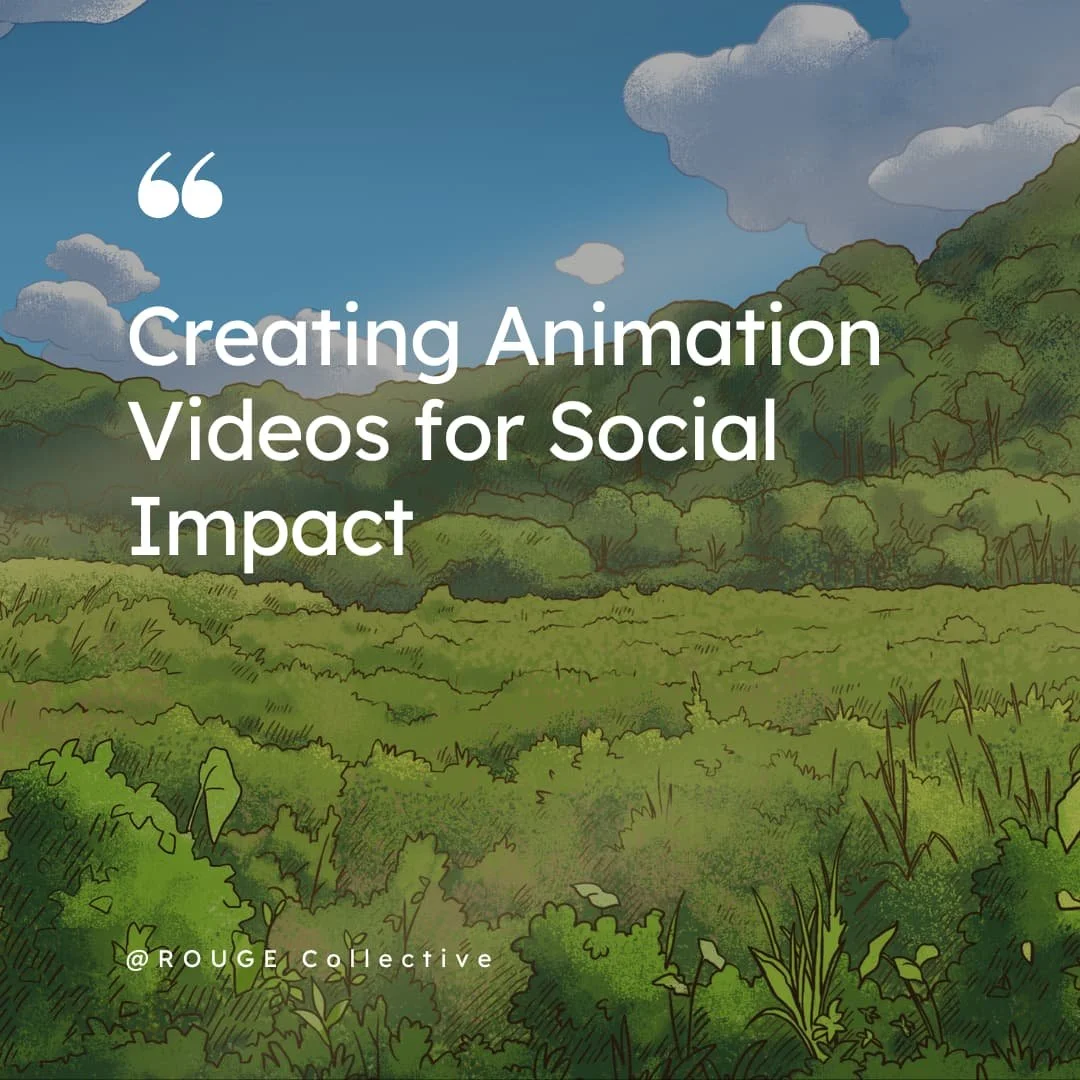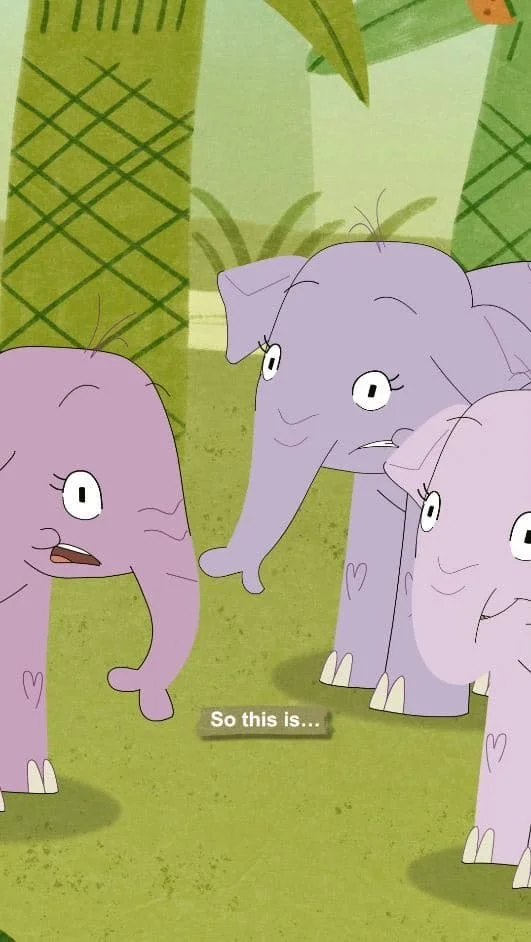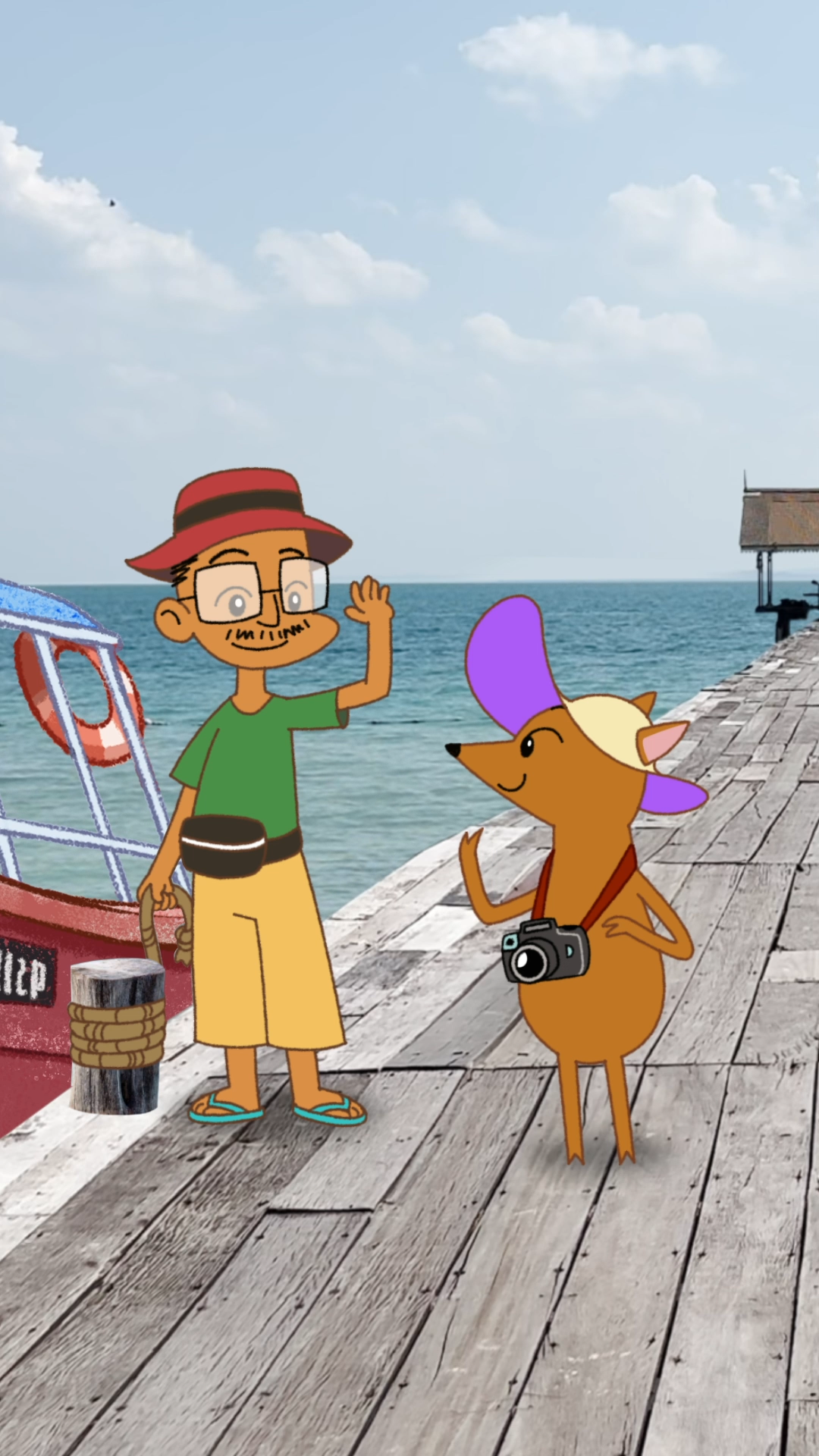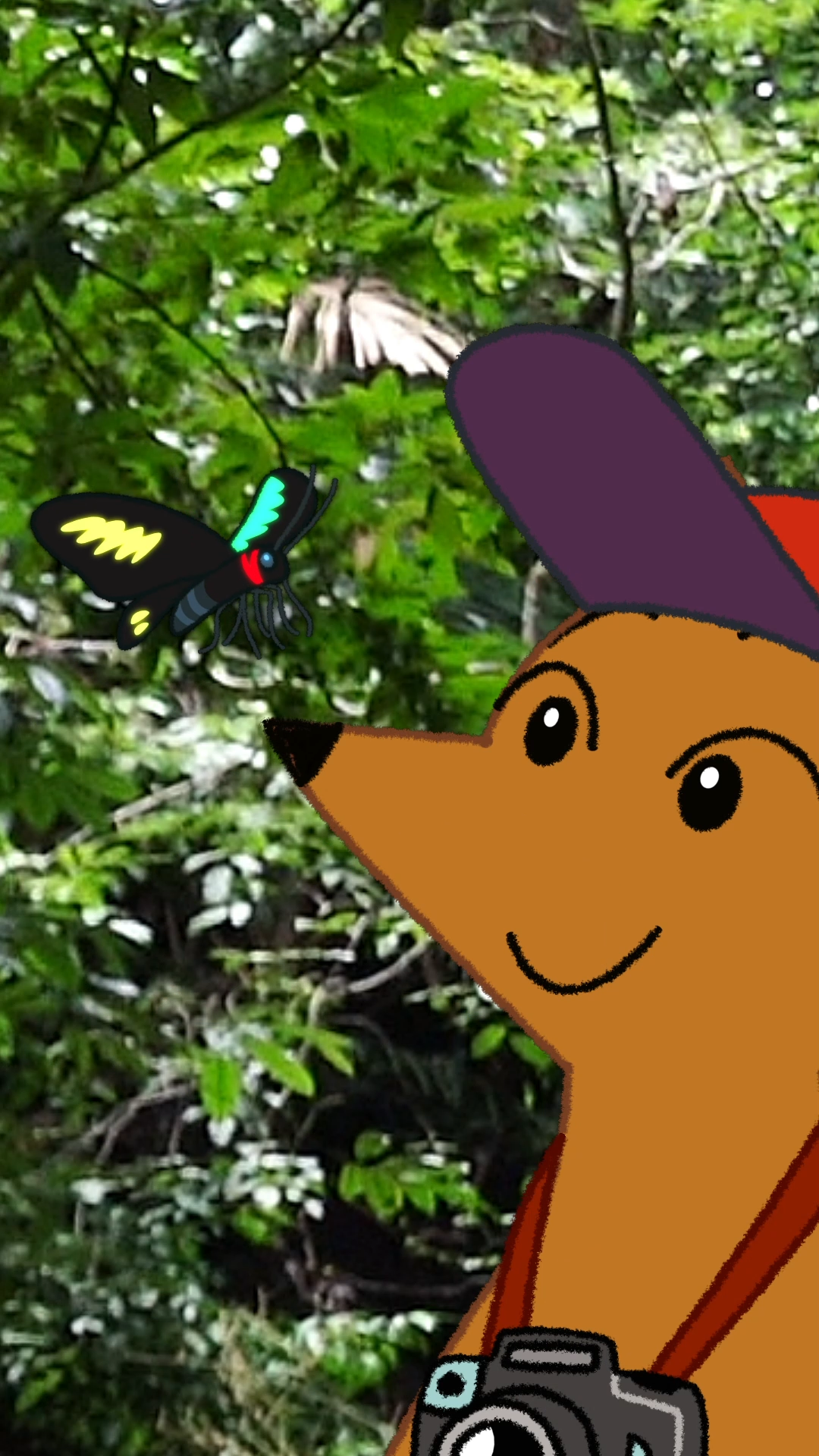Animation Videos for Social Impact: How ROUGE Brings Stories to Life
Although often associated with entertainment, animation is also used by organisations, NGOs and brands to raise awareness, educate communities and inspire action. In this guide, we’ll walk you through what social impact animation is and how ROUGE Collective leverages it to create meaningful impact.
What Is Animation for Social Change
Social-impact animation uses visual storytelling to communicate issues such as public health, education, environmental protection, inclusion, safety, and civic engagement. By blending visuals, narrative, and emotion, people can understand the context, care about the outcome, and know what to do next.
“The 17 UN Sustainable Development Goals (SDGs) are a global blueprint for a better world. At ROUGE Collective, these goals guide every story we tell — ensuring our work contributes meaningfully to a more sustainable and compassionate world.”
Social-impact animation is particularly valuable when:
The topic is complex or technical,
Audiences span languages, ages, and literacy levels,
Filming would be sensitive, unsafe, or impractical,
You need localisation and versioning without reshoots.
Why Use Animation for Social Impact
Animation possesses several structural advantages that other media cannot replicate:
Higher Engagement
Animation has a natural way of capturing attention and holding it. The combination of illustrations, movement, and storytelling draws viewers in and keeps them watching. Compared to static images or text posts, animations tend to perform better on social media, encouraging more comments, likes, and shares. Research also shows that animated content can significantly boost user attention and promote deeper interaction with important messages.
Because of this, animation can help social impact campaigns reach wider audiences. A powerful example is Jalan Arif, a short 2D animated series by ROUGE Collective in collaboration with Malaysian non-profit Seratu Aatai, created to celebrate World Elephant Day. The series introduces Arif, a teenage Bornean elephant, through a lighthearted encounter with Ahmad, an oil palm worker, who is surprised by Arif’s small size.
In their playful exchange, Arif proudly explains his unique features—smaller ears, a shorter, straighter trunk, and a long tail, which he calls his “style”, while gently teaching Ahmad (and the audience) how to behave safely around Bornean elephants.
Instead of lecturing, the series uses warmth, charm, and character-driven storytelling to make learning natural and memorable. Jalan Arif demonstrates how animation can turn educational content into an engaging experience that captures attention and inspires care and reflection.
Animation is, at its heart, a powerful tool for social impact because it doesn’t just deliver information; it inspires people to care, react, and connect.
Enhanced Learning and Retention
People naturally remember what they see in motion, and animation takes advantage of that. By turning complex ideas into visual stories, it makes information easier to understand and harder to forget.
For example, a study on science lessons for students found that using animation in teaching significantly improved both knowledge and retention. Lessons that included animated content helped students grasp concepts more effectively and stay engaged throughout the learning process.
This shows that animation not only captures attention but also enhances comprehension and retention, making it a valuable tool for conveying complex social issues in an engaging and memorable way.
Creative Freedom
Animation allows visualisation of scenarios impossible or unsafe to film, including abstract concepts, future scenarios, and sensitive situations requiring anonymity. Take, for instance, a topic particularly close to me: mental health. With live action, there are only so many ways you can show depression. With animation, there are many ways to represent the internal turmoil happening inside somebody's mind.
For example, the Pixar movie Inside Out, released in 2015, captured the hearts of audiences by creatively visualising the inner workings of 11-year-old Riley’s mind. The film personifies her core emotions as characters such as Joy, Sadness, Anger, Fear, and Disgust, giving viewers a clear window into how these emotions interact and influence her behaviour. The film also visualises abstract mental experiences through the concept of “Personality Islands,” representing Riley’s core memories, which makes complex psychological processes understandable, relatable, and even empathetic.
Not constrained by the laws of physics, animation ultimately allows us to reach emotional notes we could not achieve with live action.
Cost-Effectiveness
Despite all the hot talk about AI, animation is still a very manual, linear process: countless hours, many people, and a lot of careful work to make pixels move behind a screen. So true enough, the expectation is that it is more expensive than pointing a camera at something and hitting 'Record'. But consider this: once an animation is created, it offers remarkable flexibility. It can be easily modified, translated, or adapted for different audiences and cultures without having to reshoot everything from scratch.
When you think about long-term use and the ability to repurpose content in multiple ways, animated content can offer a kind of cost-effectiveness that’s hard to achieve with other formats.
Accessibility Enhancement
Animation enhances accessibility by making information more engaging, intuitive, and easier to understand for diverse audiences compared to text and images.
VS Static Text
Animation supports multiple learning styles — Some people process information better through motion and visual change rather than static text. Animation accommodates visual learners and those who benefit from kinesthetic or dynamic representation of information.
Animation makes text-heavy content more accessible — Information presented through animation can reduce reliance on dense text, helping people with dyslexia, low vision, or limited reading ability access the same content.
VS Static Images
Animation illustrates spatial relationships — For abstract concepts or spatial understanding, animation can show how things move, relate to each other, or change over time in ways that static images cannot. This helps people with spatial processing difficulties or visual impairments (when combined with audio description).
VS Live Action
Animation offers controlled clarity — Unlike live action, animation gives creators precise design control to simplify visuals and eliminate unnecessary elements that might cause sensory overload. This precision helps people with cognitive processing difficulties, ADHD, or visual impairments by presenting only essential information in a clear, highly controlled manner that live-action footage cannot replicate.
Emotional Safety
Animation can create a gentle space for viewers to engage with sensitive topics without feeling overwhelmed. Hair Love, the Oscar-winning short directed by Matthew A. Cherry, is a great example. The story follows an African-American father, Stephon, as he tries to style his daughter Zuri’s hair for the first time— a simple task that becomes a heartfelt journey of patience, love, and pride in one’s culture.
Cherry and producer Karen Rupert Toliver created the film to bring more representation to animation. As Cherry said, "We wanted to normalise black hair." Through its expressive animation and heartfelt storytelling, Hair Love touches on identity, family, and the cultural significance of black hair in a way that feels approachable and safe.
This combination of warmth, emotional distance, and thoughtful storytelling shows how animation can tackle meaningful social topics while allowing audiences to connect, reflect, and engage without feeling overwhelmed. Hair Love demonstrates this beautifully in practice.
Formats of Social-Impact Animation
2D Animation
2D Animation is ideal for human stories, empathy-driven narratives, fundraising, and community engagement. It features expressive characters, an approachable tone, and a wide range of visual styles.
3D Animation
3D Animation works best for demonstrations, environmental or spatial storytelling, safety training, and future scenario visualisation. Its realism and spatial depth help audiences understand complex systems and environments.
Motion Graphics
Motion graphics work well for policies, program overviews, data storytelling, and step-by-step instructions, offering clear structure and fast production that is particularly effective for multilingual campaigns.
Interactive Storytelling
Designed for training, behaviour change, and decision-making scenarios, interactive storytelling engages audiences through participation and branching choices, making it ideal for learning platforms or campaign websites.
Documented Social Impact Case Studies: Our Work
Cultural & Historical Storytelling — How Bali Became Bali
For SAKA Museum in Bali, we created How Bali Became Bali, an animated exploration of the island’s history and cultural evolution. By translating complex historical narratives into visually engaging sequences, the animation makes heritage accessible to diverse audiences, sparking curiosity and cultural pride. The project demonstrates animation’s power to convey rich, layered stories in a way that traditional media struggles to achieve.
Sustainable Tourism Education — Sang Kancil and Sustainable Tourism
Partnering with The Habitat Foundation, our series Sang Kancil’s First Adventure follows the clever mouse-deer, Sang Kancil, as he explores Besar Cluster Island in Mersing. The story introduces children and families to sustainable tourism practices in a fun, memorable way, encouraging audiences to respect local ecosystems and wildlife. By combining narrative charm with practical lessons, the series creates both enjoyment and actionable awareness.
Our Approach to Social Impact Animation
Commitment to Meaningful Storytelling
At ROUGE Collective, we harness storytelling to create a kinder, more inclusive world. We collaborate closely with organisations to ensure every frame reflects authentic voices, community values, and clear calls to action. Our original stories often draw on Southeast Asian perspectives, combining cultural insight with emotional resonance to move hearts first.
Remote and Collaboration-First
As a remote-first animation studio, we reduce our carbon footprint through minimal office energy use, limited travel, and digital-first production workflows. We also prioritise local talent to lower transportation emissions and support authentic, regionally rooted storytelling.
Ongoing Commitment
We regularly review our practices, set ambitious targets for social and environmental performance, and maintain transparency with stakeholders. By expanding our network of purpose-driven creatives and sharing best practices with the wider industry, we contribute to a more sustainable and equitable creative ecosystem.
Why Your Organisation Should Choose Animation for Social Change
Animation helps your organisation tell stories that resonate with people everywhere, no matter their language or culture. It creates emotional connections that inspire action, from supporting a cause to changing behaviours, and the content you create can be reused across campaigns to keep your message alive and impactful.
Partner with ROUGE Collective for Meaningful Social Impact Animations
At ROUGE Collective, we believe animation is more than art. It is a powerful tool for transformation that can raise awareness, inspire action, and spark meaningful conversations with lasting impact across Singapore, Malaysia, and beyond.
Partner with our social impact animation studio to craft animations that engage, educate, and drive real social change. Reach out to our team today and start turning your vision into stories that move hearts and inspire action.







